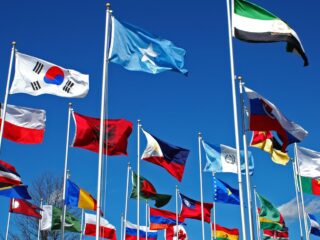
Southeast Asian countries are in a unique position, geographically and economically. They’re nestled in a region that’s ripe for growth and development. But why should these nations focus on self-reliance?
The answer lies in the potential of their resources and the strength of their people. It’s about harnessing what’s already there and turning it into something more. It’s about creating a future that’s not reliant on others, but instead, built on their own capabilities and resilience.
Jelaskan Alasan Negara-Negara Asia Tenggara Perlu Mengandalkan Kerjasama Ekonomi

Unlike Western nations, Southeast Asian countries share similar economic structures and development stages. This similitude can make economic cooperation more straightforward and mutually beneficial. Increased trade, exchange of technologies, and human resources development programs could propel these nations forward faster than they might alone.
Sustainable use of natural resources, a pertinent issue for these countries, could also be addressed effectively through shared management strategies. A shared approach to maintaining ecological balance while exploiting resources can prevent overuse and aid sustainability.
Economic benefits of interdependence
Interdependence within Southeast Asian countries yields several substantial economic benefits. It’s about paving the way for a prosperous future by playing off each other’s strengths and leveraging the region’s diverse resources.
Increased Trade Opportunities

Let’s examine key data portraying the positive trajectory of inter-country trading within the Association of Southeast Asian Nations (ASEAN):
| Year | Total Trade Value(USD billion)* |
|---|---|
| 2010 | 576.5 |
| 2015 | 719.2 |
| 2019 | 859.3 |
*Source: ASEAN Secretariat
Hence, enhanced trade opportunities pave the way for businesses’ expansion and open new possibilities for Southeast Asian markets. It’s a cycle that fuels formal employment, increases income, and hence enhances the standard of living across the region.
Shared Resources and Expertise
Southeast Asian nations are characterized by their diverse, rich resources. Engaging in mutual collaboration leads to sharing of these resources, helping nations overcome domestics shortfalls.
Take, for instance, the Mekong-Lancang Cooperation (MLC) initiated in 2016. This program among these countries enables sharing of key resources like freshwater, which bolsters economic growth in the agricultural sector.
Further, sharing of expertise promotes innovation, development, and technology transfer. Let’s take Singapore’s InfoComm technology sector. Its advancements have been leveraged for digitalization of businesses in Indonesia and Vietnam.
In essence, jelaskan alasan negara-negara asia tenggara perlu mengandalkan kerjasama ekonomi translates to elucidating why Southeast Asian nations need to depend on economic cooperation. Shared resources and expertise offer an apt response. United, these nations can address domestic deficits, foster innovation, and enhance overall regional prosperity.
Political advantages of cooperation
In our exploration of why Southeast Asian countries need to rely on economic cooperation, it’s essential not to overlook another significant facet: the political advantages. Cooperation among these countries delivers considerable political dividends, bolstering the region’s stability and collective influence on the global stage.
Regional Stability and Security

These mechanisms, built on the edifice of collective trust and mutual understanding, work towards surprising conflicts which threaten regional stability. In turn, a safe and secure environment encourages further cooperation, both politically and economically, among these nations.
Collective Bargaining Power in International Affairs

Take the case of ASEAN’s negotiations with China over the South China Sea, where collective bargaining power has proven invaluable. A unified ASEAN stance allows for an overall balanced and productive engagement with China, maintaining the region’s political equilibrium.
Also, the collective stance of these nations paves the way for influencing global policies. The collective advocacy of these countries at international forums enables them to advance their shared regional interests. This form of unified engagement goes beyond merely survival tactics against larger, more powerful nations. It’s also about leveraging joint efforts for mutual benefits and progress.
Environmental reasons for collaboration

Take, for example, the shared bodies of water. Water pollution in one country doesn’t stop at its borders; it spreads, affecting both the marine ecosystem and the livelihoods of fishermen across the region. By banding together and implementing region-wide regulations, these countries can tackle such problems more effectively.
Further, Southeast Asia is home to some of the world’s most bio-diverse forests. Deforestation in these areas translates to a loss in biodiversity that cannot be replaced. This brings a collective responsibility to protect their shared natural heritage.
Clearly, at the epicenter of these environmental challenges, jelaskan alasan negara-negara asia tenggara perlu mengandalkan kerjasama ekonomi. Through economic collaboration, they can muster resources, share knowledge, and devise unified strategies to safeguard their shared environment. Promoting green growth and investment in sustainable solutions are critical aspects that interlink environmental and economic cohesion.
Strengthening Cultural Ties Through Collaboration

In the same vein, it’s critical to highlight the importance of culture in fostering economic cooperation. It’s the very heartbeat of each member nation, a thread of unity that runs through the diverse landscape of Southeast Asian countries. Bridging cultural gaps can prove instrumental in diminishing potential misunderstandings and conflicts arising from diverse ethnic, cultural, and religious backgrounds, consequently fueling more effective economic collaboration.












